
Bringing Water from A to B.
Success at last!
Joan
8/2/20243 min read
Look around this region and you will see plenty of evidence of how water has been transported from one place to another. The most famous example of course is the three tier Pont du Gard, constructed by the Romans over two thousand years ago to carry water to the fountains, baths and houses of the citizens of Nemausus (Nîmes.)
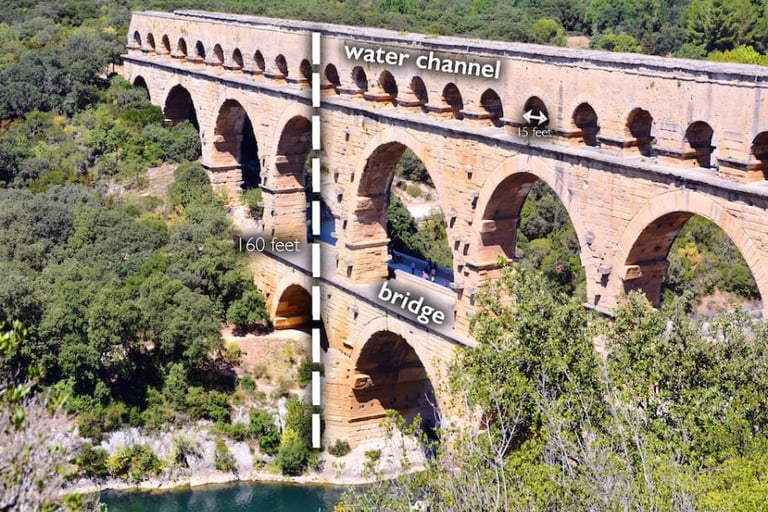

This is a wonderful place to visit, but it offers a very different experience from the one that we had nearly thirty years ago, well before a large visitors' centre was constructed. At that time one was free to wander around at will , and B. decided to join some of the other visitors who had decided to climb around the structure. As I don't have a head for heights I preferred to stay on the ground, accompanied by our youngest son. Little did I know what would happen next!
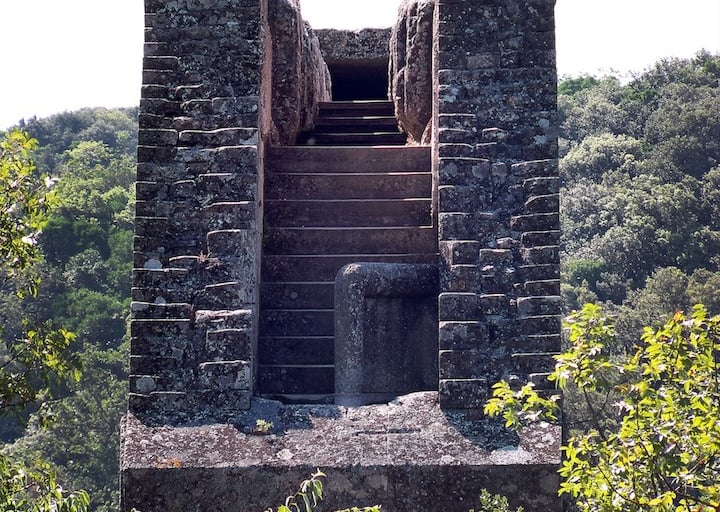

Following the example of a few other hardy souls, Brian found himself at the very top of this magnificent structure. Making his way along the lead lined channel he noticed that that it was topped with a series of heavy transverse blocks. One or two people proceeded to climb up onto these , so of course he followed suit. There were no guard rails. "It wasn't really dangerous," he assured me afterwards. Except that, at that very moment, one of his spectacle lens fell out, and tumbled over the edge , to fall to the ground some 49 metres below. He never saw it again. Of course, while I was straining to see him from the ground, I was blissfully unaware of this drama. Reader, he survived, and managed to descend safely! But perhaps it is just as well that visitors are now much more closely supervised .


The Pont du Gard
Inspired by the architecture of the Pont du Gard, an eighteenth century engineer named Henri Pitot de Launay designed another wonderful aqueduct to provide water to the city of Montpellier. This is the Aqueduc de Clement, which leads water to the beautiful Chateau d'Eau in the Parc de Peyrou. It is here that we visited the Montpellier Book Fair with my first book(see earlier blog.) That beautiful area of Montpellier is known as Les Arceaux.

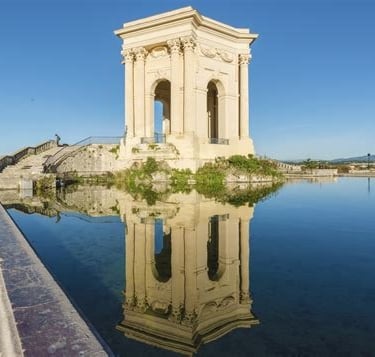
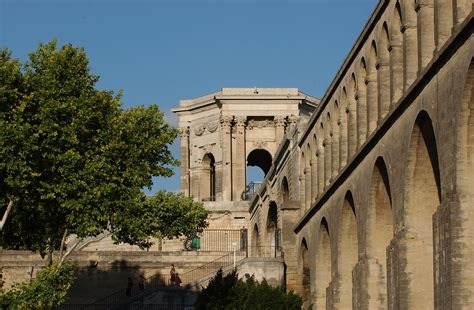

Les Arceaux, Montpellier
But nowadays we don't have to build magnificent stone aqueducts in order to transport water. Do you remember in a recent blog that I talked about the proposed pipeline that will run through the forest, carrying water from a village above us to the plains around Lodève? On this occasion plain black alkathene piping will take precedent over the fine golden stone. This could be great news for us. Yesterday we were visited by the director of SIELL(Service Intercommunal Eaux du Lodevois Larzac.) This is a newly formed public body that has been formed specifically to address the severe water shortage in this area.
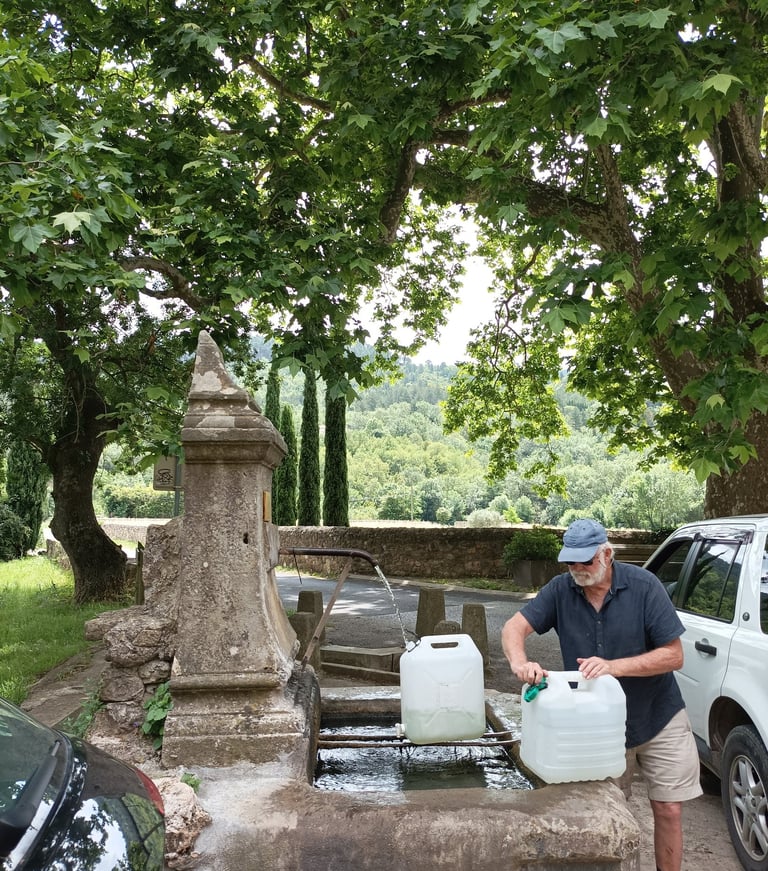

The director talked to us of the serious water situation, and described the project in which treated water will be brought from the village of Navacelles to the area around Lodève. But before they could proceed , they needed our permission to traverse the road that runs through our property. We mentioned our growing precarity of water, hoping to use this as a bargaining point. Much to our amazement the director immediately agreed that a connection could be made that would supply us with water in times of scarcity. For the first time in 22 years , we will have a metred supply of treated water to use when we are desperate. Our water situation should be precarious no more.

